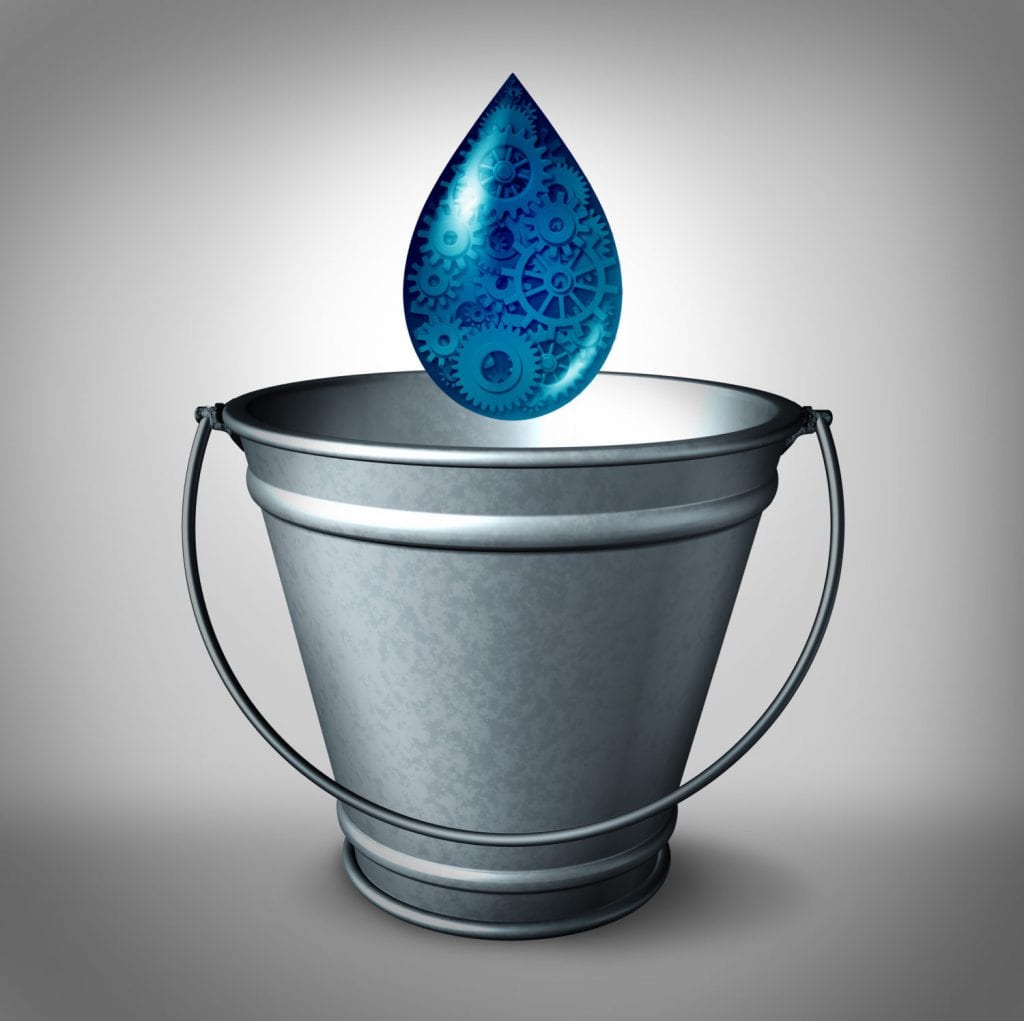As humans, we’ve been trying to manage water systems for a long time. Even the Romans, builders of one of the early water supply systems, worried about losing water through leaks, as noted by their Water Commissioner. At the time, and for centuries afterward, visual inspection was the only way to identify leaks from plumbing or water systems. Looking for drips and puddles is still a primary form of water leak detection, but not all leaks are obvious.
Technological advancements now provide us with more options to find hidden leaks. Here’s more information about types of water leak detection and how the technology works.
Acoustic Water Leak Detection
Water makes sounds as it escapes from pipes. It may hiss, whoosh, drip, splash or thump. Acoustic water leak detection technology relies on listening devices and microphones to locate leaks. The system’s listening device picks up sound waves and transfers them to a microphone. Experienced operators determine the location and size of the leak based on the loudness and tone of the sounds.
Higher frequency sounds indicate smaller leaks; lower sounds suggest larger leaks. In some acoustic water leak detection systems, the sensor is placed directly into the water system for an extended time, collecting information about leaks as it travels.
Thermal Imaging Water Leak Detection
A thermal imaging water leak detection system uses an infrared thermography (IT) camera. These hand-held cameras produce images of heat radiation across the color spectrum, with hotter areas showing up as red and cooler areas appearing as purple or blue. Since water typically has a lower temperature than air, a leak can be recognized as a darker color on the infrared image.
Fiber Optic Camera Water Leak Detection
Fiber optic cameras can provide precise information about water leaks. A miniaturized camera mounted on a long fiber optic cable is placed into the water system through a drain. The camera sends images back to a monitor, showing the location of leaks and the condition of pipes.
Ground Penetrating Radar (GPR) Water Leak Detection
This water leak detection technology relies on electromagnetic waves bouncing off material below the surface to create two-dimensional reflections of a water system. GPR reflections will be distorted if a leak is present. GPR systems can also create three-dimensional maps to show not only the presence of a leak, but also the direction water is moving, helping to target repairs.
Hydrostatic Water Leak Detection
With this technology, a ball is inserted into a main sewer pipe and inflated to block the pipe. Water is then run into the system and pressure is measured over a time. A pressure drop indicates a leak in the system. Since it only measures the presence of a leak, hydrostatic water leak detection is typically part of a multi-step evaluation. Fiber optic cameras may be used after hydrostatic water testing to more fully understand the location and type of leak.
Water leak detection Vancouver, WA
We’ve come a long way in understanding how to locate and assess water leaks that are not easily visible. For help with water leak detection in the Vancouver area, contact Simpson Plumbing. We’ll put our technology and expertise to work for you to find the leak – and we’ll provide the plumbing repairs you need to get your water system back to peak performance.


 About Us
About Us  Services
Services  Plans
Plans  Commercial
Commercial